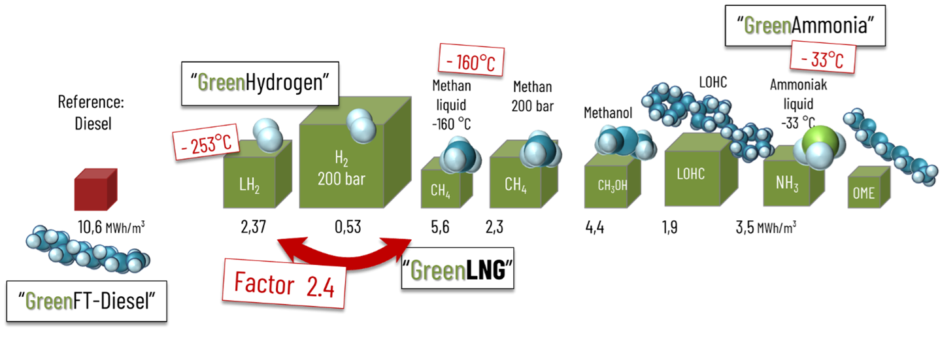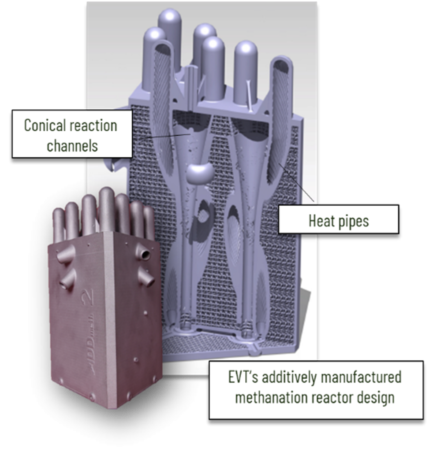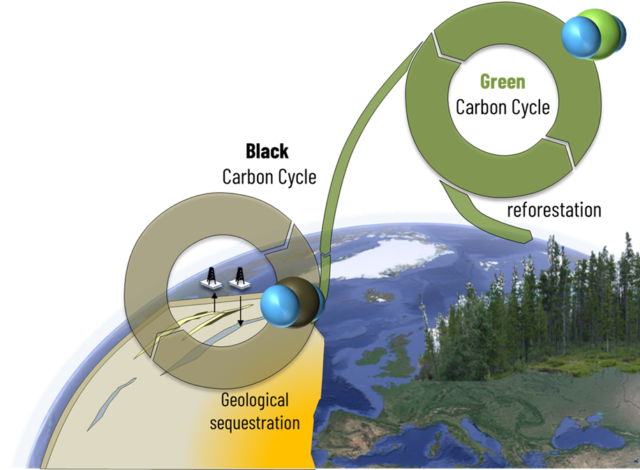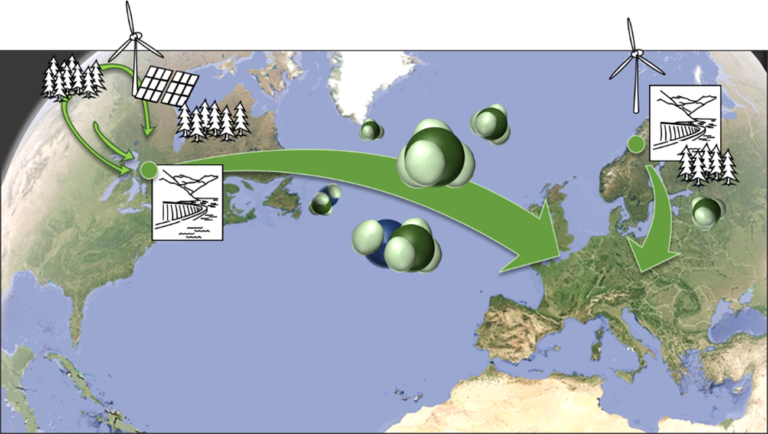The Project Impacts
The projects impacts
GreenLNG – the most convenient hydrogen carrier
LNG offers the highest volumetric energy density of all hydrogen carriers after Fischer-Tropsch-Diesel. The existing infrastructure allows the use of green hydrogen in existing gas networks without immense investments in new infrastructures and new technologies.

Our key innovations
 The hybrid catalytic process is based on five key innovations that will significantly reduce the plants complexity and maximize the carbon efficiency, namely
The hybrid catalytic process is based on five key innovations that will significantly reduce the plants complexity and maximize the carbon efficiency, namely
- The use of renewable electricity for a novel electrically heated steam gasification (sorption enhanced e-gasifier) process avoids carbon and efficiency losses of the gasifiers combustion chamber
- An additively manufactured dual function chemical catalytic hydrogenation/ methanation reactor that enables hydrogenation of hydrocarbons (tars) through an optimized temperature profile
- A biological methanation process with real time in-situ gas monitoring for advanced process control technologies secures a stable biological methanation process even at fluctuating operation conditions
- An electromethanogenesis reactor converts residual CO2 in order to qualify the process for zero carbon emissions
- Artificial intelligence (AI) supported Advanced Process control minimizes efficiency losses and stabilizes operation during intermittent operation with volatile renewable electricity
Closing the Carbon Cycle
The most important challenge for the energy economy in the coming years is to close carbon cycles. For all technologies that still do rely on the use of carbon, it is therefore indispensable to extract this carbon directly from the atmosphere using biomass or direct air capture (DAC). It is crucial that the use of biomass is limited to the use of residues or wood from sustainable forestry. Forest regeneration and reforestation are also the most important measures to realize negative CO2 emissions.

The pathway to 100% renewable energies
The dramatic gas price increase by the end of 2021 shows the effects of Europe’s high dependency on Russian fossil natural gas imports on end consumer prices for electricity and other goods.
Securing affordable and sustainable renewable energies implies therefore inevitably to develop and provide technologies for a global renewable gas sector. Technologies that store bioenergy and renewable electricity as methane are therefore key technologies to establish intra-European and intercontinental supply chains for renewable energy vectors. GreenLNG as a liquid energy carrier with a particularly high energy density will provide not only carbon neutral fuel for the transportation sector, it enables also the import of renewable energies from regions with an abundance of Wind, PV, hydro power and biomass resources. These regions will have to provide renewable energies to Europe’s densely populated areas with insufficient own resources.

